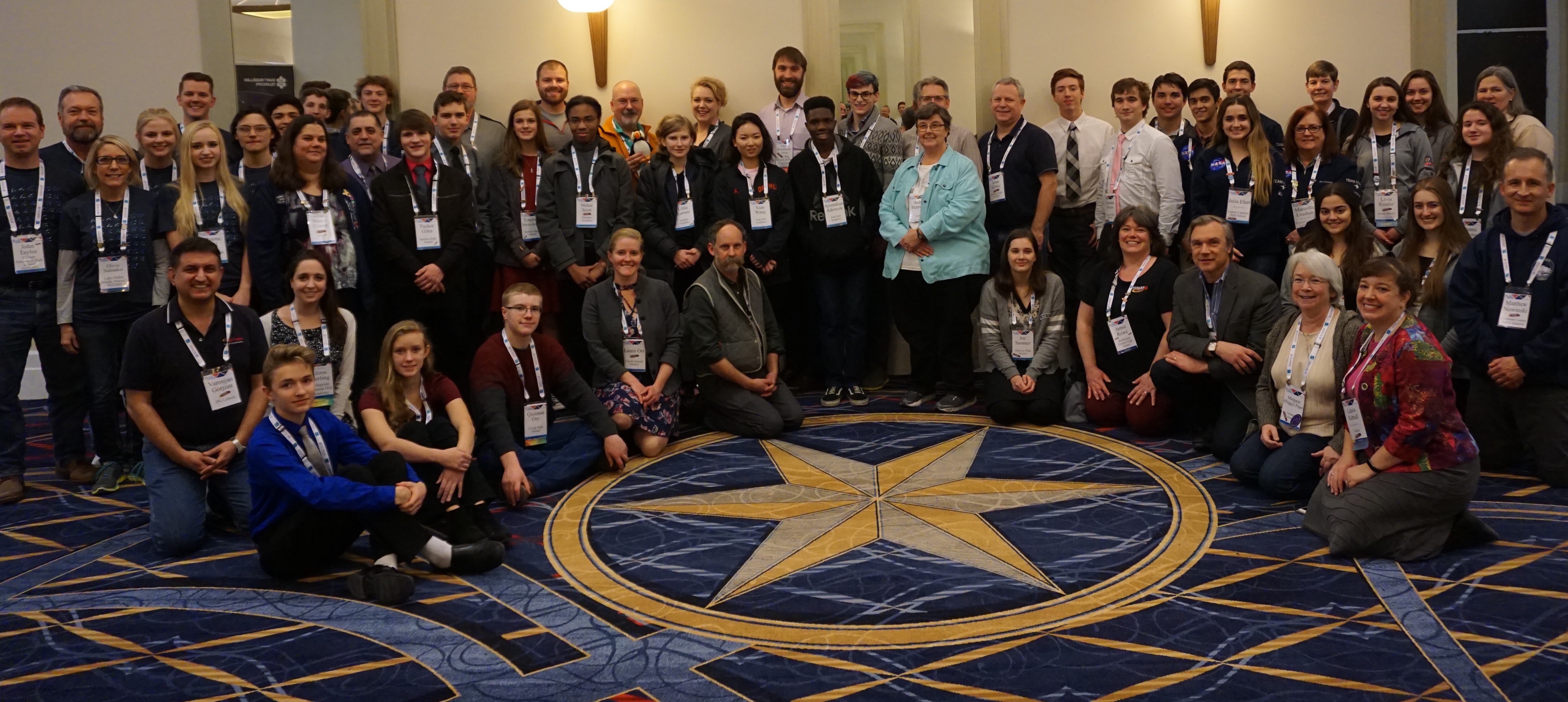
The journey continues

Again this year, more than 30 teachers, students and astronomy educators from the NASA/IPAC Teacher Archive Research Program (NITARP) are attending the winter meeting of the American Astronomical Society (AAS), running from January 8 through January 12 in National Harbor, MD.
For over a decade, NITARP has partnered small groups of educators with a research astronomer for original, year-long, authentic research projects. At the AAS meeting, the educators from the 2017 class, along with some of their students, are presenting the results of their work over the past year. Meanwhile, the educators from the 2018 class are meeting their teams and getting started on their own projects.
From NITARP’s early years through the 2017 class, a total of 110 educators from 34 states have participated or will participate. NITARP works with educators because, through them, NITARP reaches thousands of students per year with information about how science really works, what NASA does, and the wealth of astronomy data that is freely available to the public.
Here are the teams that are presenting posters at the AAS meeting this week:
2017 team working with Dr. Varoujan Gorjian (JPL/IPAC):
- Laura Orr (Ukiah High School, Ukiah, OR) – mentor teacher for the team
- Gary Duranko (Oak Hill Academy, Mouth of Wilson, VA)
- Howard Lineberger (Durham Academy, Durham, NC)
- Jamie Rowe (Bethlehem Central High School, Delmar, NY)
This team made use of Spitzer Space Telescope data obtained from the entirety of the cryogenic-era – that is, from the first 5.5 years of the Spitzer mission. They looked for the most unusual and faintest IR-bright objects serendipitously detected.
2017 team working with Dr. Luisa Rebull (IPAC):
- Thomas Rutherford (Sullivan South High School, Kingsport, TN) – mentor teacher for the team
- Sam Evans (Maumee High School, Maumee, OH)
- Olivia Stalnaker (Lake Dallas Middle School, Lake Dallas, TX)
- John Taylor (Elkhart Memorial High School, Elkhart, IN)
This team looked for young stars in a region called Cepheus-C. It is part of a large molecular cloud that is home to 1000s of baby stars. Using long wavelength data from the Herschel Space Telescope, this team looked for the youngest YSOs in this region, finding many new young stars.
The 2017 educators will now go on to conduct at least 12 hours of professional development for their colleagues in their schools and communities, at the local, regional, and national levels, in print and in person.
NITARP is announcing today the 2018 class of educators and their teams, as follows:
2018 team working with Dr. Varoujan Gorjian (JPL/IPAC):
- Thomas Rutherford (Sullivan South High School, Kingsport, TN) – mentor teacher for the team
- David Friedlander-Holm (The Bay School of San Francisco, San Francisco, CA)
- Nicholas Goeldi (Ripon High School, Ripon, WI)
- Matt Nowinski (Loudoun County Public Schools, Ashburn, VA and The Boeing Company)
- Alissa Sperling (Springside Chestnut Hill Academy, Philadelphia, PA)
2018 team working with Dr. Luisa Rebull (IPAC):
- Laura Orr (Ukiah High School, Ukiah, OR) – mentor teacher for the team
- Nancy Coster (Kankakee Valley High School, Wheatfield, IN)
- Deborah Morgan (South Sevier High School, Monroe, UT)
- Laura Wommack (Lakeside Jr-Sr High School, Plummer, ID)
They will present their results, with their students, at the 2019 AAS winter meeting to be held in Seattle, WA.
IPAC, based at Caltech, in Pasadena, CA, is leading this program. These teams use archival data from the Spitzer Space Telescope (part of the Spitzer Heritage Archive, SHA), the NASA/IPAC Extragalactic Database (NED), the NASA Exoplanet Archive, the NASA/IPAC Infrared Science Archive (IRSA), all of which are based at IPAC, and other NASA archive holdings. Funding comes from the NASA Astrophysics Data Program.
- Date: January 11th, 2018
- Category: Project News
- View Image


